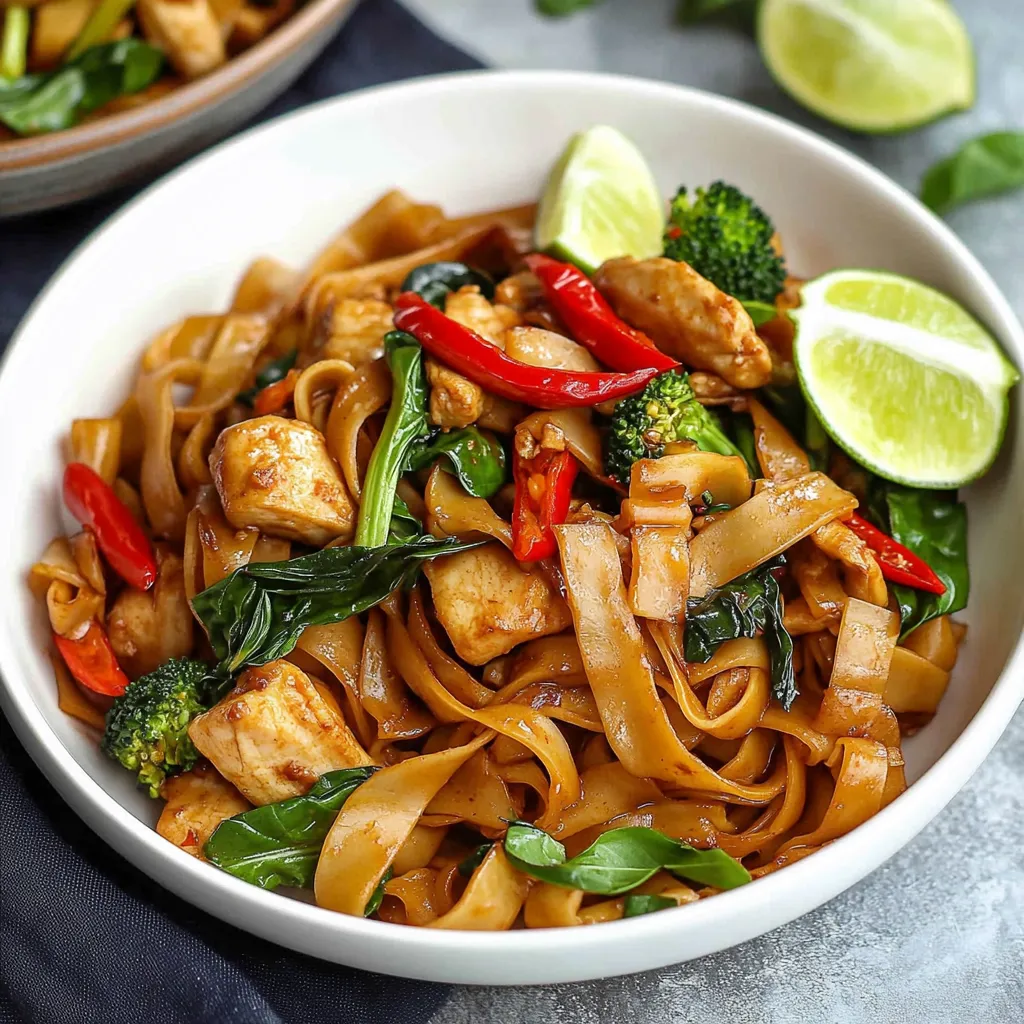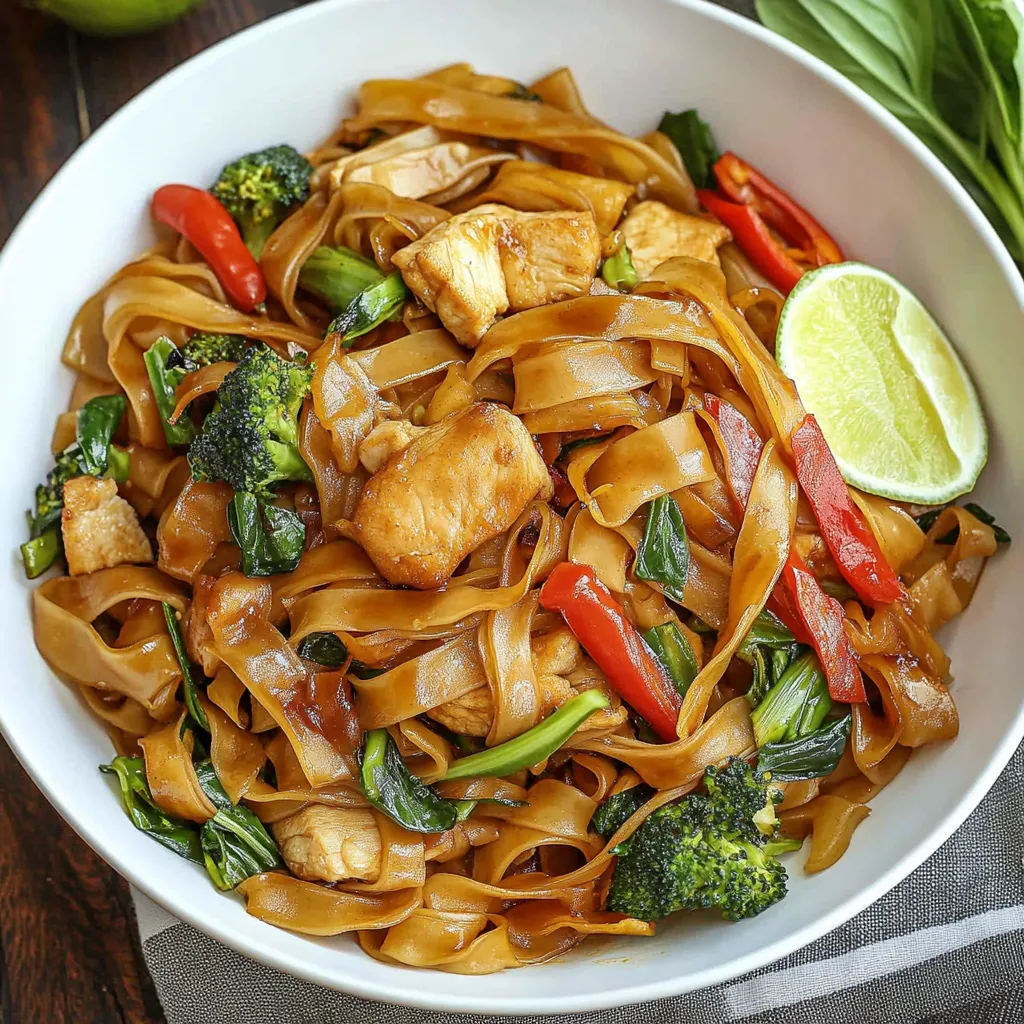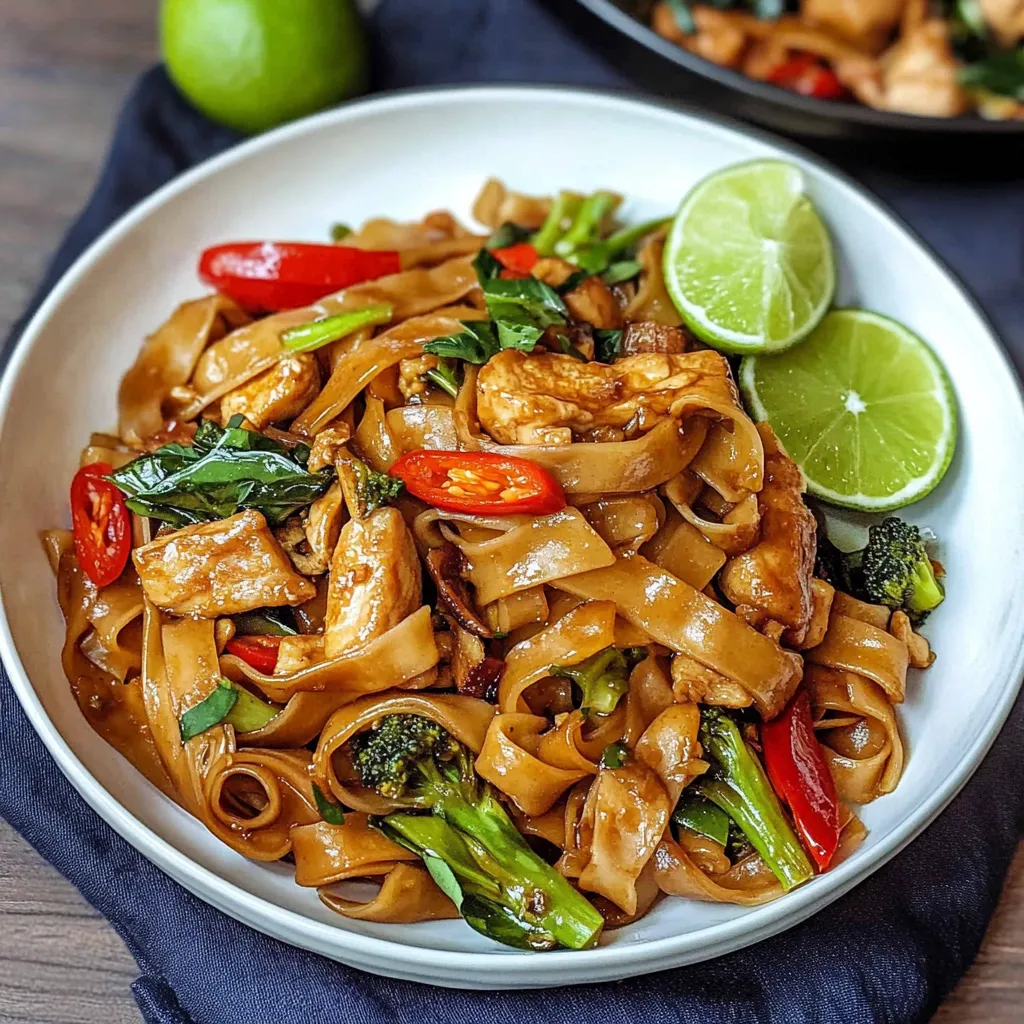 Pin it
Pin it
The art of perfect Drunken Noodles lies in balancing heat, sweetness, and umami while maintaining the signature char from high-heat wok cooking. These noodles, with their satisfying chew and complex sauce, bring authentic Thai street food flavors to your kitchen.
A Thai chef once taught me that the key to perfect pad kee mao is proper noodle preparation and maintaining extremely high heat.
Essential Ingredients
- Wide Rice Noodles: Fresh is best, but dried work well when properly soaked
- Thai Basil: Regular basil can work but lacks the authentic anise notes
- Dark Soy Sauce: Provides color and deep umami flavor
- Thai Chilies: Adjust amount for desired heat level
- High-Smoke-Point Oil: Like peanut or grapeseed
The success of this dish depends largely on proper preparation and timing. Let me walk you through the critical steps.
Detailed Instructions
- 1. Noodle Preparation:
- Soak noodles in warm (not hot) water until pliable but still firm. Test by bending - they should resist slightly without breaking. Drain thoroughly and toss with a little oil to prevent sticking. Never boil the noodles as they'll continue cooking during stir-frying.
- 2. Sauce Balance:
- Combine sauces in specific order: oyster sauce first, followed by soy sauces, then fish sauce. Add sugar gradually, tasting as you go. The sauce should be intensely flavored as it will distribute across noodles and vegetables. Balance heat with sweetness, adjusting chili amount accordingly.
- 3. Wok Strategy:
- Heat wok until smoking before adding oil. Listen for the sizzle when ingredients hit the pan - this indicates proper temperature. Work in batches to maintain heat. Keep ingredients moving constantly to prevent burning while achieving desirable charring.
- 4. Timing Matters:
- Start with aromatics (30 seconds), followed by protein (2-3 minutes), then harder vegetables (2 minutes), softer vegetables (1 minute), noodles and sauce (2-3 minutes), finishing with herbs (30 seconds). Total cooking time shouldn't exceed 10 minutes.
- 5. Assembly Process:
- Layer ingredients strategically - protein aside after cooking, add back at end to prevent overcooking. Toss noodles quickly but gently to avoid breaking. Add sauce in circular motion around wok's edge, allowing it to caramelize slightly.
 Pin it
Pin it
The secret to restaurant-quality results lies in preparation and heat management. Every component should be ready before you begin cooking.
Variations and Serving Suggestions
Adapt this dish to your preferences while maintaining its essence. For protein, try shrimp (cook for 2-3 minutes), tofu (press and pan-fry first), or sliced beef (marinate briefly). Vegetable options include Chinese broccoli, snap peas, or mushrooms. For vegetarian version, use mushroom sauce instead of oyster and omit fish sauce.
 Pin it
Pin it
Regional Adaptations
Different regions of Thailand prepare this dish uniquely. Northern style uses more chilies and less sugar. Southern version might include holy basil instead of Thai basil. Some regions add baby corn or bamboo shoots. Adjust sauce ratios based on regional preferences - more lime for southern style, extra fish sauce for central Thailand version.
Serving Essentials
Serve immediately while noodles are hot and sauce is glossy. Traditional accompaniments include:
- Lime wedges for fresh acidity
- Extra chili flakes or sauce for heat adjustment
- Chopped peanuts for crunch
- Fresh bean sprouts for texture
- Cold Beer Singha or Thai iced tea
Presentation Tips
Arrange noodles in a mound with colorful vegetables visible. Position protein pieces attractively on top. Garnish with fresh Thai basil sprigs and lime wedges. For family-style serving, provide extra sauce and condiments separately. Consider serving in traditional Thai ceramic bowls or on banana leaves for authentic presentation.
 Pin it
Pin it
Storage Tips
While best enjoyed fresh, leftovers can be stored in airtight container for up to 2 days. Reheat in wok with splash of water to revive sauce. Never microwave - noodles become mushy. For meal prep, prepare components separately: pre-cook protein, cut vegetables, mix sauce. Combine just before serving for optimal texture.
Frequently Asked Questions
- → Why are they called drunken noodles?
- Despite the name, there's no alcohol - they're popular as late-night food after drinking.
- → Can I adjust the spice level?
- Yes, adjust number of Thai chilies to taste.
- → Is Thai basil essential?
- Thai basil provides authentic flavor but regular basil can substitute.
- → Can I use different proteins?
- Shrimp, beef, tofu or other proteins work well.
- → How do I prevent sticky noodles?
- Don't oversoak noodles and stir gently when cooking.
